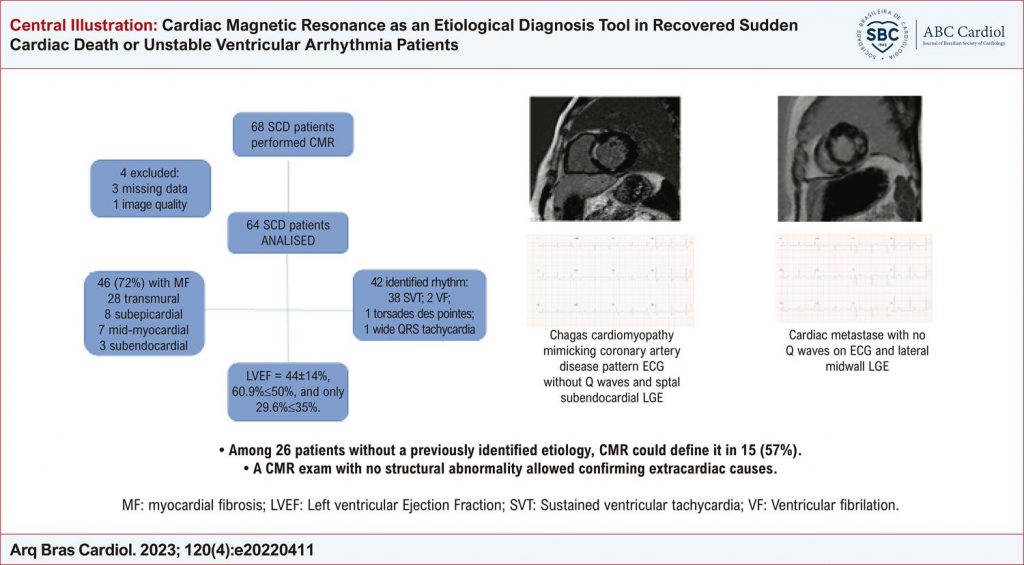Arq. Bras. Cardiol. 2023; 120(4): e20220411
Cardiac Magnetic Resonance as an Etiological Diagnosis Tool in Recovered Sudden Cardiac Death or Unstable Ventricular Arrhythmia Patients
This Original Article is referred by the Short Editorial "The Challenge of Making Cardiac Resonance a Global Reality".
Abstract
Background
Cardiac magnetic resonance (CMR) has an increasing diagnostic relevance in survivors of sudden cardiac death (SCD) or unstable ventricular arrhythmia (UVA) in developed countries.
Objective
To evaluate retrospectively the additional role of CMR in a developing country where few resources are available, and should be used more effectively.
Methods
The study included SCD or UVA survivors admitted between 2009 and 2019 at a tertiary academic institution referred to CMR. Demographic, clinical, and laboratory data were collected from the medical records. CMR images and reports were reviewed and their impact on the final etiological diagnosis was determined. A descriptive analysis was performed and p<0.05 established as significant.
Results
Sixty-four patients, 54.9±15.4 years old, and 42 (71.9%) males. Most events (81.3%) were out of the hospital and ventricular tachycardia was the most common rhythm. Cardiovascular medications were previously used by 55 patients, and beta-blockers were the most used medications (37.5%). Electrocardiogram had electrical inactive areas in 21.9% and all of them had fibrosis at CMR. Mean left ventricular ejection fraction (LVEF) was 44±14%, with 60.9% ≤50% and only 29.7% ≤35%. Late gadolinium enhancement was identified in 71.9%, with a transmural pattern in 43.8%. Chagas cardiomyopathy was the most common etiology (28.1%), followed by ischemic cardiomyopathy (17.2%). Among 26 without a previously identified etiology, CMR could define it (15 patients – 57%).
Conclusion
In accordance with previous studies in developed countries, CMR was capable of increasing etiological diagnosis and identifying the arrhythmogenic substrate, allowing better care in half of the underdiagnosed patients.
1,205

